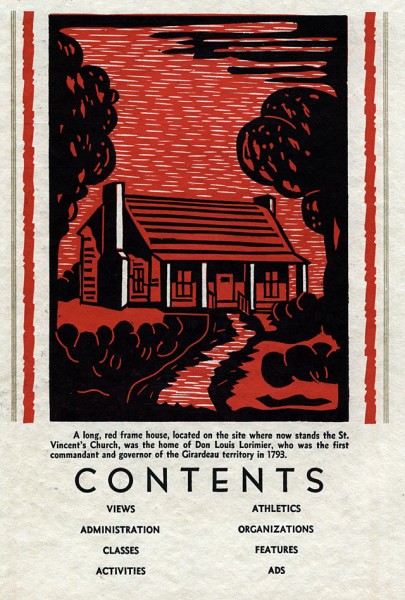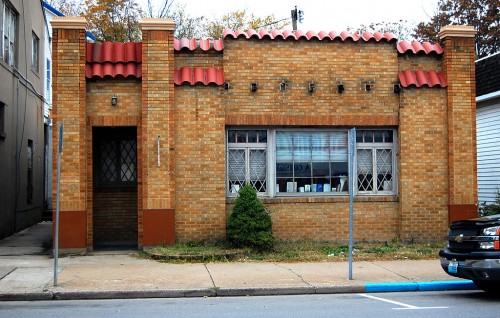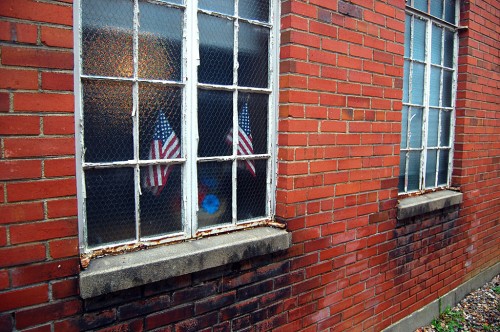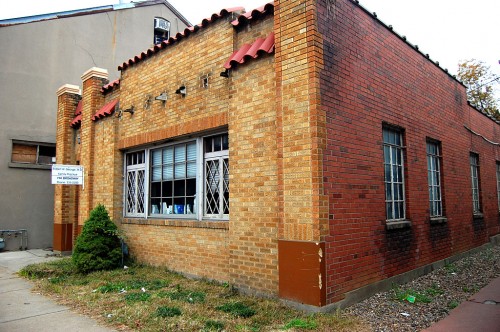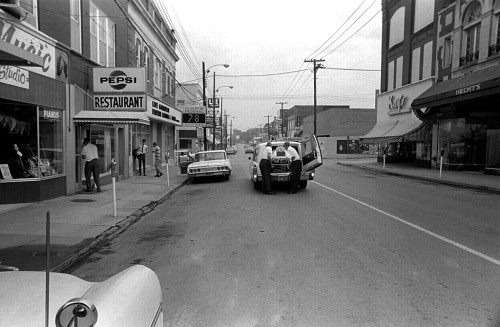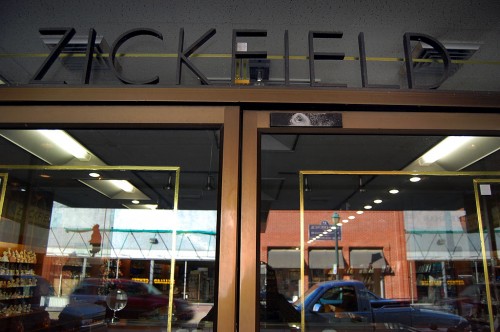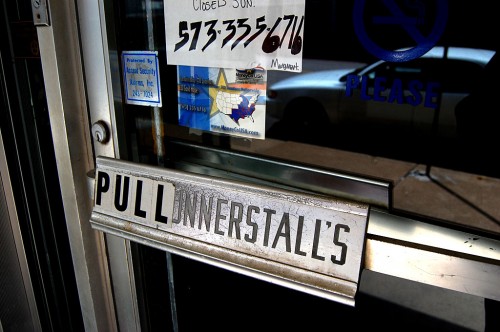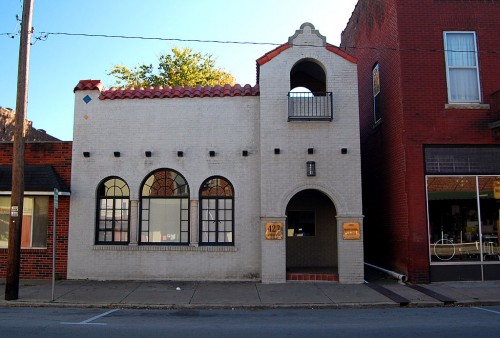 When I ran photographs of a doctor’s office at 714 Broadway, several readers commented that the building looked a lot like what used to be Lueders Studio at 427 Broadway. I don’t know if they were built by the same person, but they were constructed in the same Spanish Revival style. I think the bricks above must have been painted, because I remembered the building as being more the same shade as the Wilson/Estes office. [Click on any photo to make it larger.]
When I ran photographs of a doctor’s office at 714 Broadway, several readers commented that the building looked a lot like what used to be Lueders Studio at 427 Broadway. I don’t know if they were built by the same person, but they were constructed in the same Spanish Revival style. I think the bricks above must have been painted, because I remembered the building as being more the same shade as the Wilson/Estes office. [Click on any photo to make it larger.]
Everybody was shot by Frony and Lueders
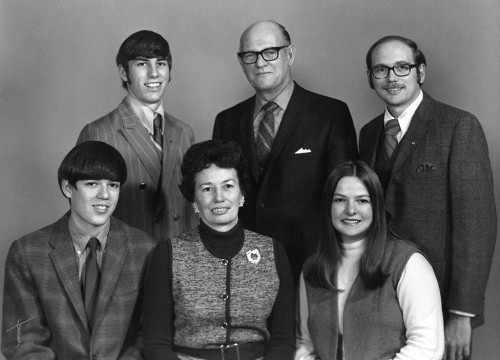 I once wrote that there’s probably nobody who lived in Southeast Missouri between 1927 and 1986 who hadn’t had his or her picture taken by One-Shot Frony. You could say almost the same thing about Lueders Studio, which spanned an even longer period of time. There were other photos studios in that era, but Lueders was the one our family and Central High School turned to document students, engagements, weddings, anniversaries and other special occasions.
I once wrote that there’s probably nobody who lived in Southeast Missouri between 1927 and 1986 who hadn’t had his or her picture taken by One-Shot Frony. You could say almost the same thing about Lueders Studio, which spanned an even longer period of time. There were other photos studios in that era, but Lueders was the one our family and Central High School turned to document students, engagements, weddings, anniversaries and other special occasions.
Here’s a description from SEMO’s Special Collections website: The Lueders Studio Collection spans seventy years of commercial photographic work by Herbert Lueders, and his sons, Paul and John. Herbert Lueders opened his studio at 427 Broadway Avenue in Cape Girardeau, Missouri, in 1925. A distinguished photographer, Herbert Lueders won 18 merit awards from the Professional Photographers Association of America for his portrait work. H. L. Lueders’ oldest son, Paul, began the study of photography with his father at the age of eight. Paul joined his father’s studio after returning from World War II, eventually taking over operations and running the studio until his death in 1995. John Lueders, younger brother of Paul, worked for thirty years as the business manager for the studio, as well as a portrait printer and photo retoucher.
I’m pretty sure some of my baby pictures were taken by Lueders, but I didn’t have time to dig them out to check for his usual mark. The picture above was taken when Lila Perry was officially added to the family. It must have been taken after we got engaged in December of 1968, but before our wedding in June of 1969, because I don’t see a wedding ring on my left hand.
Lila’s wedding photo
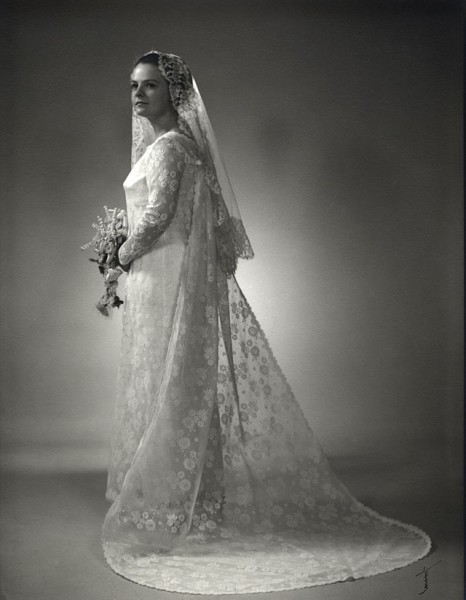 Lila thinks this is the best photo that was ever taken of her. Paul Lueders was a perfectionist. He didn’t like the way her dress fell and waiting for her to grow taller wasn’t an option, so he had her stand on a couple of Sagamore yearbooks (If you look closely, you can barely see them in the photo.
Lila thinks this is the best photo that was ever taken of her. Paul Lueders was a perfectionist. He didn’t like the way her dress fell and waiting for her to grow taller wasn’t an option, so he had her stand on a couple of Sagamore yearbooks (If you look closely, you can barely see them in the photo.
I feel a little guilty about reproducing these photographs. I still cringe when I think about a visit Jim Stone and I made to the studio one afternoon, probably to pick up our senior pictures. Jim was his neighbor, so he had the nerve to ask Mr. Lueders if we could borrow the negatives to make some prints. I know now how much of a faux pas that is: studios make their living off reprints.
Instead of throwing us out of the studio, he diplomatically said, “I’m very particular about the way my photographs are printed, and I don’t let anyone else make prints of the negatives because my reputation is on the line.”
Our photo as a couple
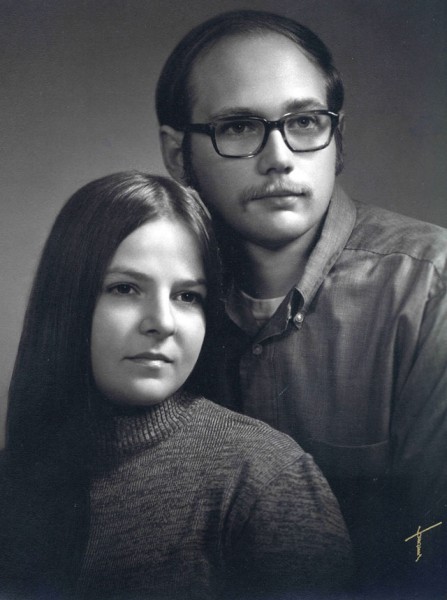 When we made a pass through Cape in 1971, we stopped to have an updated portrait done. Mr. Lueders must not have had many people to talk technique to, because I remember him showing me more about large format photography than I ever saw in classes at Ohio University. Photos like ours and school photos were the bread and butter, but he also wanted to pull out dye transfer color that he had shot of Cape landmarks. He was proud of his work, for good reason.
When we made a pass through Cape in 1971, we stopped to have an updated portrait done. Mr. Lueders must not have had many people to talk technique to, because I remember him showing me more about large format photography than I ever saw in classes at Ohio University. Photos like ours and school photos were the bread and butter, but he also wanted to pull out dye transfer color that he had shot of Cape landmarks. He was proud of his work, for good reason.
Back for a family portrait
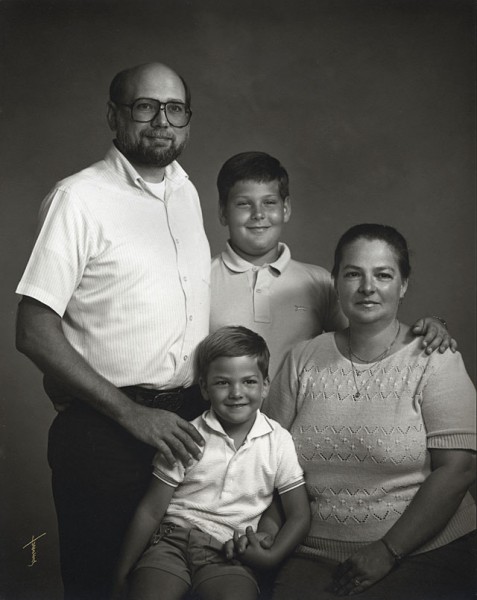 In 1985, when Matt was 10 and Adam 5, it was time for an updated shot. These copies on a computer screen don’t do the original works justice. I’ve spent enough hours in the darkroom to know how hard it is to get the tonal range that Mr. Lueders did. He could hold detail in the darkest black and the whitest white.
In 1985, when Matt was 10 and Adam 5, it was time for an updated shot. These copies on a computer screen don’t do the original works justice. I’ve spent enough hours in the darkroom to know how hard it is to get the tonal range that Mr. Lueders did. He could hold detail in the darkest black and the whitest white.
After we moved to Florida, we posed for a local studio that had a reasonable reputation. When we went to pick up the prints, I told the photographer that they weren’t acceptable, then I went to get some Lueders photos to show him what a REAL portrait should look like. He reshot the photos, but I could tell that he would never be able to come close to the quality I grew up with in Cape. Those were the last studio portraits we had made.
Adam’s last Lueders photo
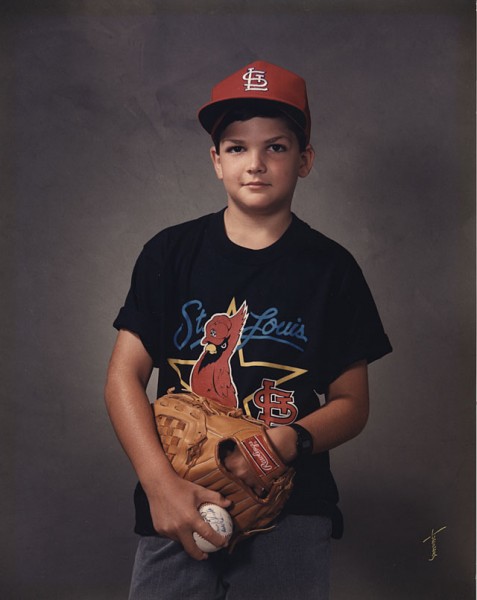 This must have been taken in 1990, when we took our Great Western Vacation trip. The date’s not written on the back, but Lila guessed Adam was about 10, because that’s about when he started playing baseball. These were the first – and only – color photos we had made there. To be honest, I prefer the black and white.
This must have been taken in 1990, when we took our Great Western Vacation trip. The date’s not written on the back, but Lila guessed Adam was about 10, because that’s about when he started playing baseball. These were the first – and only – color photos we had made there. To be honest, I prefer the black and white.
Matt’s photo
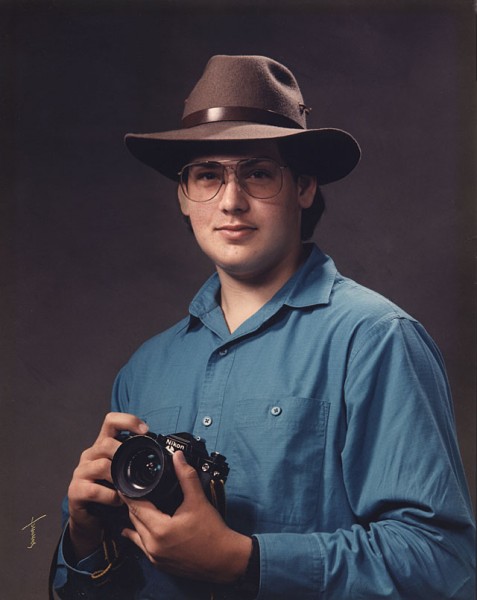
Matt’s about 15 in this photo. Where Adam was into sports, Matt was interested in photography (and pretty good at it. Both boys won national photo contests).
When I heard that Mr. Lueders had died, I was afraid that a huge chuck of the region’s history could be lost, based on my experience in southern Ohio where I tried to track down the film of several old photo studios. In every case, the files had been consigned to the landfill.
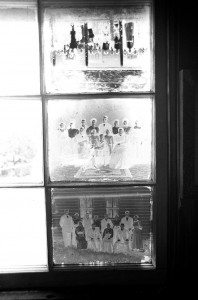 That’s not unusual. I found these old glass negatives being used as window panes in a Perry County building in Frohna in 1966.
That’s not unusual. I found these old glass negatives being used as window panes in a Perry County building in Frohna in 1966.
Lueders photos to be preserved
It was a great relief to hear that the Lueders photographs have been acquired to be part of Southeast Missouri State University’s Special Collections and Archives Digital Collections. The really neat thing is that they are putting the photos online.
The website says, “The Lueders Studio Collection is a “who’s who” of Southeast Missouri and the surrounding region, containing approximately 75,000 images of local people, families, politicians, businesses and events. While the Lueders Studio specialized in portrait photography, they also hired out for advertising work and photography related to insurance claims.
The photographs in the digital collection represent the studio’s commercial photography work, not portraiture. Interior and exterior views of Cape Girardeau businesses in the mid-twentieth century are represented here, along with street scenes, images of downtown floods, churches and schools, events and community groups.”
If you enjoy seeing the photos on this blog, you’ll REALLY enjoy seeing the wide range of photos in the Lueders Collection.
I’m sure we’ll be revisiting Lueders Studio again. Somewhere I’ve seen photos of Paul Lueders when he and Dad were in Central High School’s Kodak Club in the 1930s.
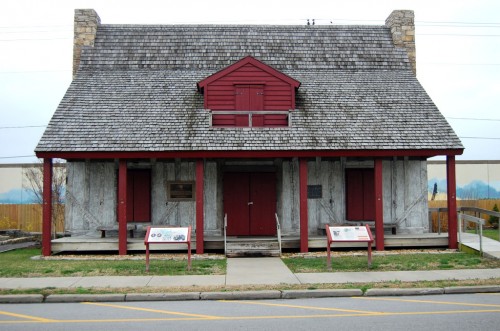 This is a photo of the Red House taken March 22, 2010.
This is a photo of the Red House taken March 22, 2010.
